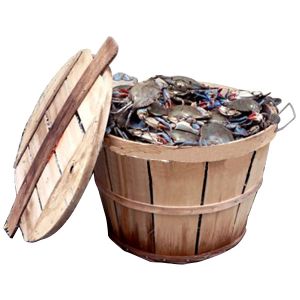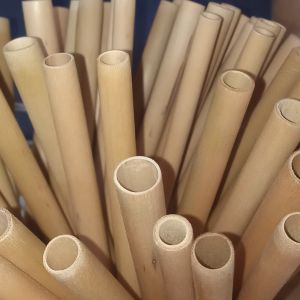Vietnam becomes the second largest exporter of tablets in the world
According to statistics from the General Department of Customs, Vietnam's wood pellet exports in 2020 will reach about 3.2 million tons, the second largest in the world. Nearly 100% of wood pellet from Vietnam are exported to Japan and Korea...
Vietnam Wood pellet are produced from waste materials of the agricultural, forestry and fishery industry, which is a very diverse source of biomass. Specifically, the raw materials for the production of pellets at present are mainly from: by-products of the wood processing industry (chips, sawdust, tree bark chips, wood scraps...); crop residues (rice husk after milling, bagasse, corn stalks, sugarcane, hay stalks, coffee bean husks...).
Currently, many countries including Japan and Korea are using pellets as input materials for thermal power plants.
EXPORT VALUE INCREASE 15.3 TIMES IN 7 YEARS

The Vietnam Wood and Forest Products Association in collaboration with Forest trends has just published a research report on the production and export of pellets in Vietnam. This study was conducted from March 2021 to June 2021.
Dr. To Xuan Phuc, an expert of Forest trends, said that in Vietnam in the period 2013-2020, the amount of exported pellets increased by over 18.2 times, from 175.5 tons in 2013 to 3.2 million tons in 2020. The export value of pellets increased 15.3 times, from nearly 23 million USD in 2013, to 351 million USD in 2020. The volume of pellets produced in Vietnam is only a very small amount used for drying wood, the rest is mostly all for export.
Amount of và giá value of Vietnam's exports in the period 2013-2020
Quantity and value of exported pellets of Vietnam in the period of 2013-2020

The study shows that the price of export pellets has decreased gradually over the years, in contrast to the increasing trend in export volume and turnover. The reason for the continuous decline in the export price of pellets is that more and more businesses are involved in the production of pellets, from a variety of sources of raw materials and by-products of the agricultural, forestry and fishery industry.
In 2020, the whole country has 74 enterprises participating in exporting tablets. Among them, large-scale export enterprises exporting over 50,000 tons/enterprise) are 17 enterprises); the number of medium-sized enterprises (export volume from 20,000 to 49,000 tons/enterprise) is 10 enterprises; the rest are small-scale enterprises (under 20,000 tons/enterprise).

Currently, Vietnam has about 80 factories and private establishments producing tablets, with a total capacity of nearly 4.5 million tons/year, mainly concentrated in the Southeast region, followed by the Eastern region. North.
The source of input wood for the production of pellets is mainly used from wood by-products such as sawdust, shavings, top branches of planted forest wood (acacia, eucalyptus, rubber), scattered trees... Source of raw materials This is put into the pressing process under high pressure to create the product.
Small-scale local production facilities buy any locally available source of wood by-products to produce pellets. These purchasing activities are usually done through a system of agents. Some large enterprises source materials from plantations, including plantations with sustainable forest management certificates (FSCs).
Researching on the world's supply and demand of pellets, Forest trends and the Vietnam Timber and Forest Products Association have forecast that the demand for pellets in the world will continuously increase rapidly. Forecast demand growth rate of about 250% in the decade 2021-2030, from 14 million tons in 2017 to 36 million tons in 2030. Not only Japan and Korea, many European countries have also used it. Tablets are the input fuel for thermal power plants.
STRATEGY TO BUILD COMPRESSION TABLETS A BILLION DOLLARS EXPORT INDUSTRY
According to Dr. To Xuan Phuc, the tablet production and export industry has just been established and developed in Vietnam with less than 10 years, but this is an industry that promises to bring in billions of dollars in the near future. The demand for tablets in the world is continuously increasing, which is the driving force for Vietnam's tablet production and export activities to expand.
However, Dr. To Xuan Phuc said that Vietnam's production and export of tablets currently have some hidden problems that need attention.
Firstly, the source of input materials is not controlled, which leads to inconsistent product quality, even poor quality products. This problem will push down the export price of tablets. Uncontrolled input materials also have the potential to affect forest resources, with inputs that can be collected from trees and small branches from the forest.
Second, although it has become one of the important export products, the production and export of tablets has not received the attention of the regulatory authorities.
Third, there is currently no mechanism to connect enterprises and processing facilities in the industry, no common voice in production and business activities, leading to unfair competition among enterprises.
Fourth, competition for input materials occurs not only with enterprises producing pellets but also between enterprises producing this product and enterprises producing other products such as wood chips and pellets. Plywood. Many signals show that in the future, competition for input materials will become more fierce.
Fifth, many enterprises producing and exporting tablets, especially small-scale enterprises, do not understand information about the export market, so they cannot grasp the taste of buying and using tablets, nor as a raw material source.
Meanwhile, Vietnam has a lot of agricultural by-products that are very good to use in the production of pellets, such as rice husks from milling plants, rice straw and dried crop stalks. However, most of this material is being burned and wasted. The reason is that a system for collecting rice husks, straw, and dried plant stalks has not yet been established to transfer to pellet factories.
From the above analysis, experts of Forest trends recommend that the State and the Ministry of Agriculture and Rural Development need to recognize and pay attention to research in the field of tablet production and export, thereby having a strategy to bring the industry into the world. This sector will become a billion-dollar export economy in the near future, thereby adding value to agricultural, forestry and fishery production.
Source: https://vneconomy.vn/
Add: No. 48, Minh Khong str., Dong Tho ward, Thanh Hoa city, Vietnam
Mob/What’sapp/Viber: 0084868989350
Email: sales1@thbamboo.com.vn
Website: https://thbamboo.com.vn
Related posts




.jpg)





